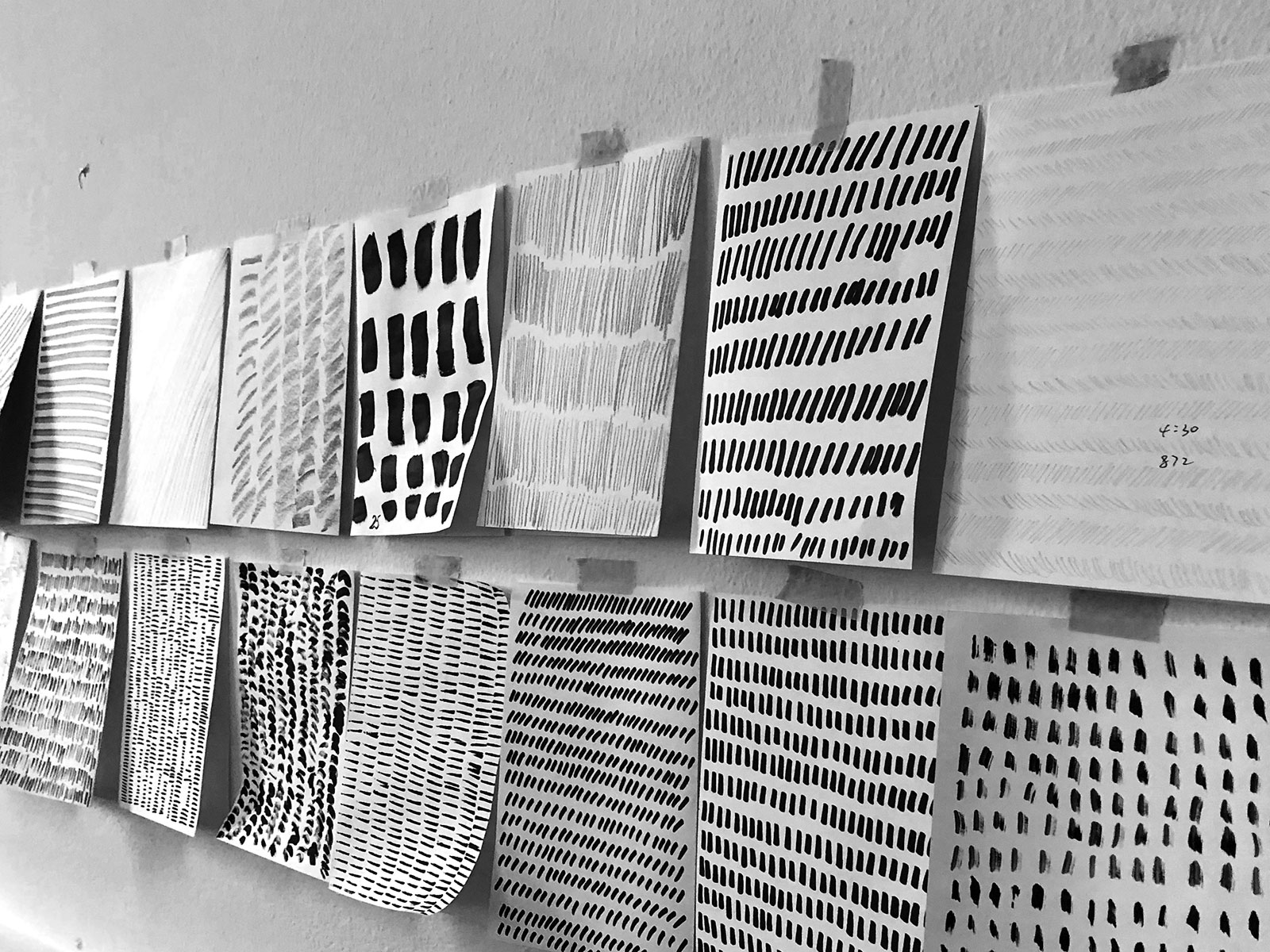LINE PRIMER
A series of open-ended prompts devoted to the expressiveness of minimal abstract graphics, devised in the context of first-year graphic design courses.
Line after line, students are invited to embrace non-figurative manual drawing to develop a visual language based on space-time experience rather then on optical appearance.
Loosely inspired on both works and texts by a wide number of artists –Pierrette Bloch, Paul Klee, Sol LeWitt, Henri Michaux, Robert Morris, Saul Steinberg, among others– the exercises issue a variety of design challenges, ranging from sound and motion to haiku poetry, from concept synthesis to script-generated forms.
A series of open-ended prompts devoted to the expressiveness of minimal abstract graphics, devised in the context of first-year graphic design courses.
Line after line, students are invited to embrace non-figurative manual drawing to develop a visual language based on space-time experience rather then on optical appearance.
Loosely inspired on both works and texts by a wide number of artists –Pierrette Bloch, Paul Klee, Sol LeWitt, Henri Michaux, Robert Morris, Saul Steinberg, among others– the exercises issue a variety of design challenges, ranging from sound and motion to haiku poetry, from concept synthesis to script-generated forms.
2015–ongoing
‘Every drawing can be understood as a motion study,
since e it is a path of motion recorded by graphic means.’
László Moholy-Nagy, ‘Linear mobility’, 1938,
in Vision in Motion, 1947
‘What do walking, weaving, observing, singing, storytelling,
drawing and writing have in common? The answer is that they
all proceed along lines of one kind or another.’
Tim Ingold, Lines. A Brief History, 2007
‘Every drawing can be understood as a motion study,
since e it is a path of motion recorded by graphic means.’
László Moholy-Nagy, ‘Linear mobility’, 1938,
in Vision in Motion, 1947
‘What do walking, weaving, observing, singing, storytelling,
drawing and writing have in common? The answer is that they
all proceed along lines of one kind or another.’
Tim Ingold, Lines. A Brief History, 2007


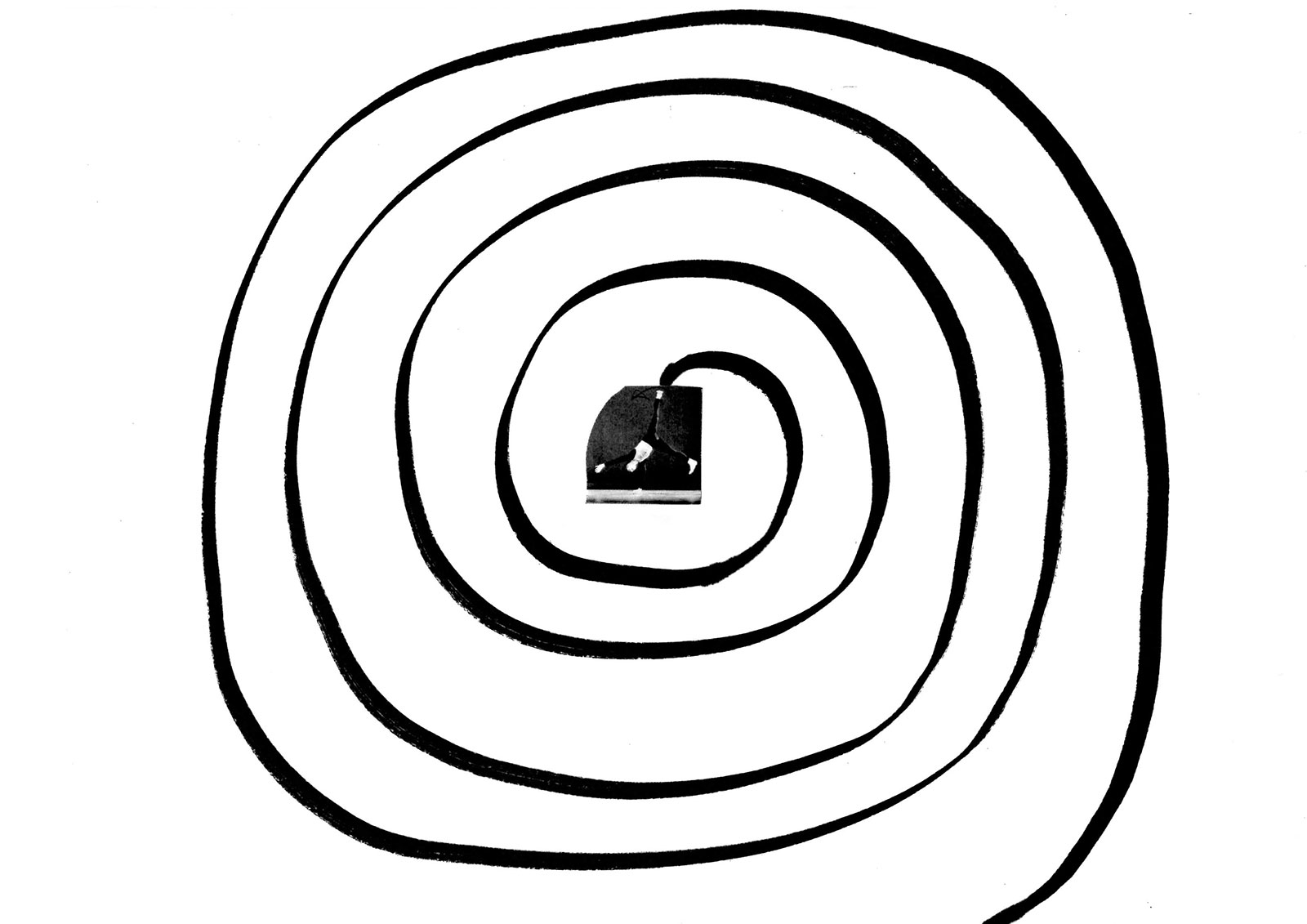

MOTION
Look at the image of a person, animal, or object. Visualize the way the chosen subject moves. Embody the motion through a drawing gesture in the form of a line.
Look at the image of a person, animal, or object. Visualize the way the chosen subject moves. Embody the motion through a drawing gesture in the form of a line.
SOUND
Listen to a recorded sound. Visualize it. Draw it as a single, continuous line.
Listen to a recorded sound. Visualize it. Draw it as a single, continuous line.
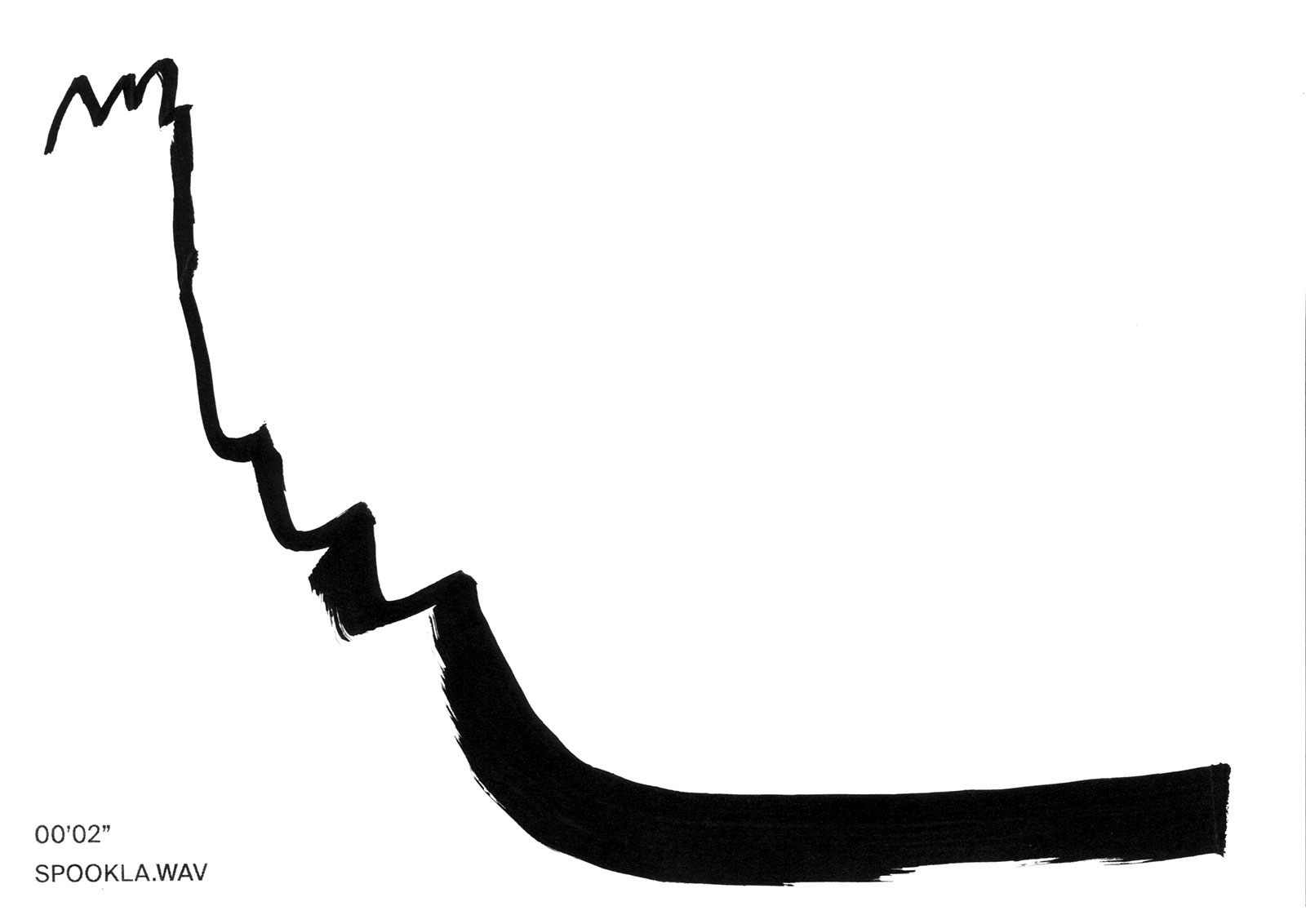
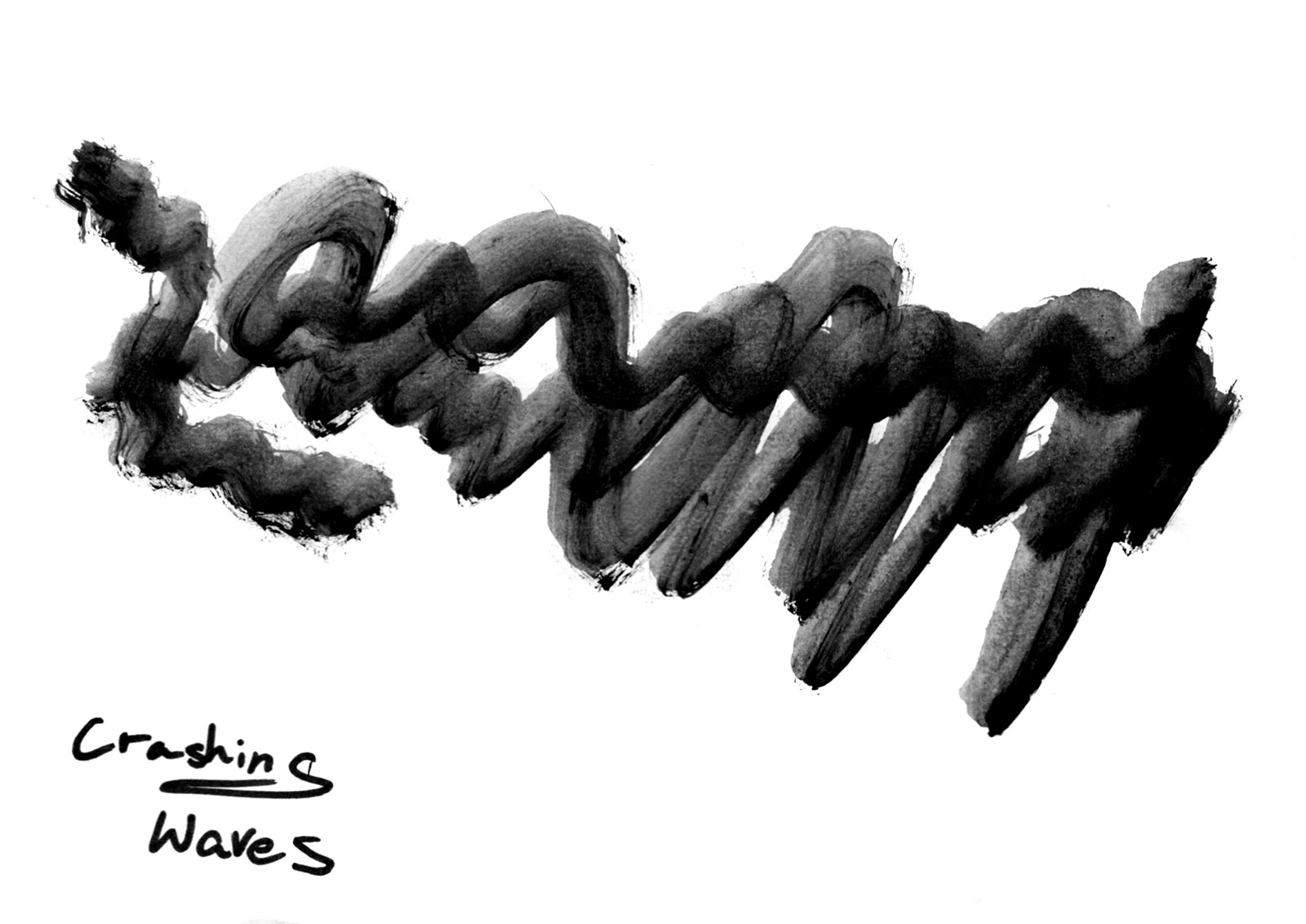

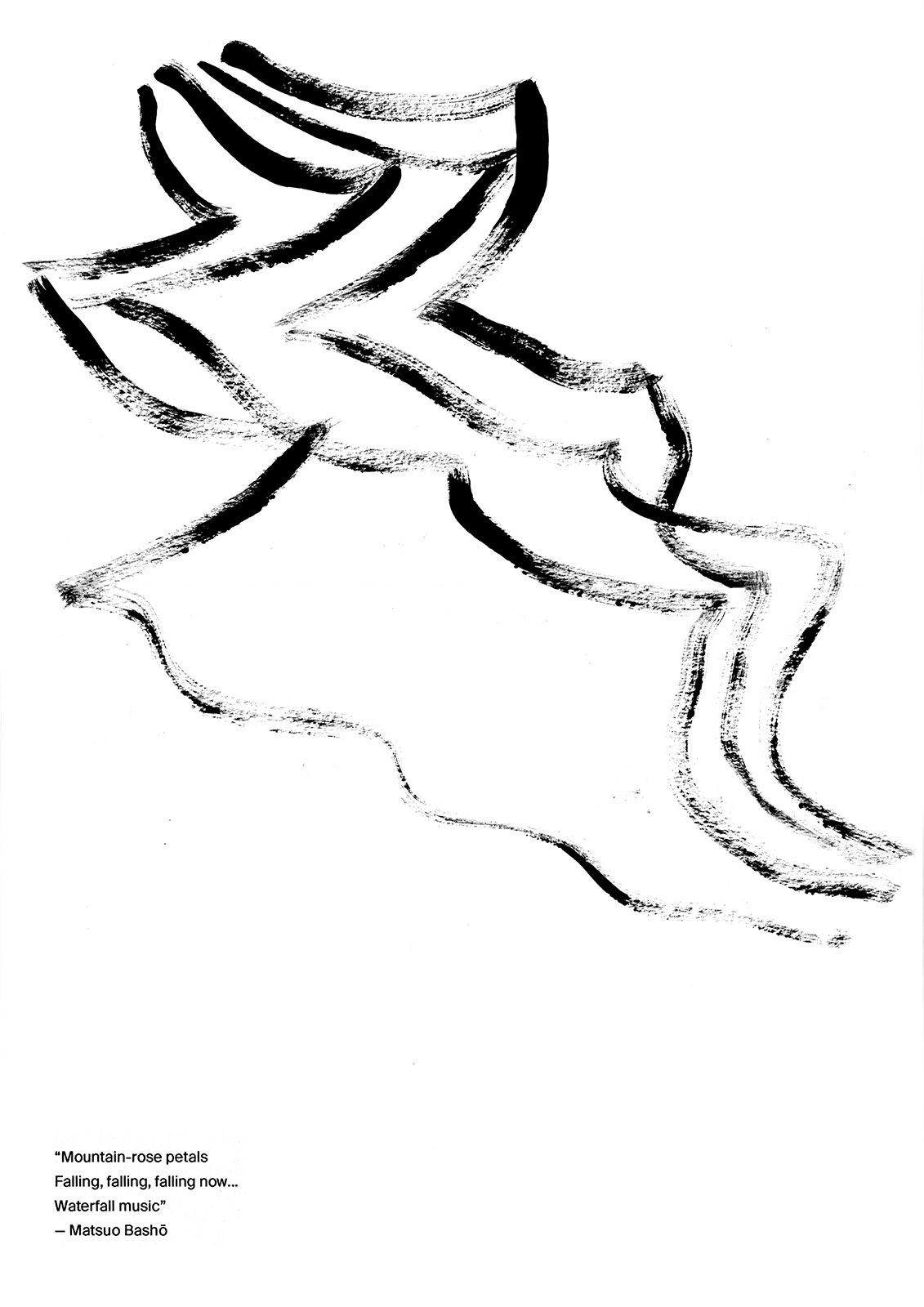

HAIKU
Read a haiku poem. Visualize it. Draw it in lines, tracing as few marks as possible.
Read a haiku poem. Visualize it. Draw it in lines, tracing as few marks as possible.
SPACE-TIME COUNTER
Set a hand-drawn mark and a drawing area. Start the timer. Repeat your mark on the page until you have filled the area, keeping count of the marks drawn. Once finished, check the time and record it along with the number of marks.
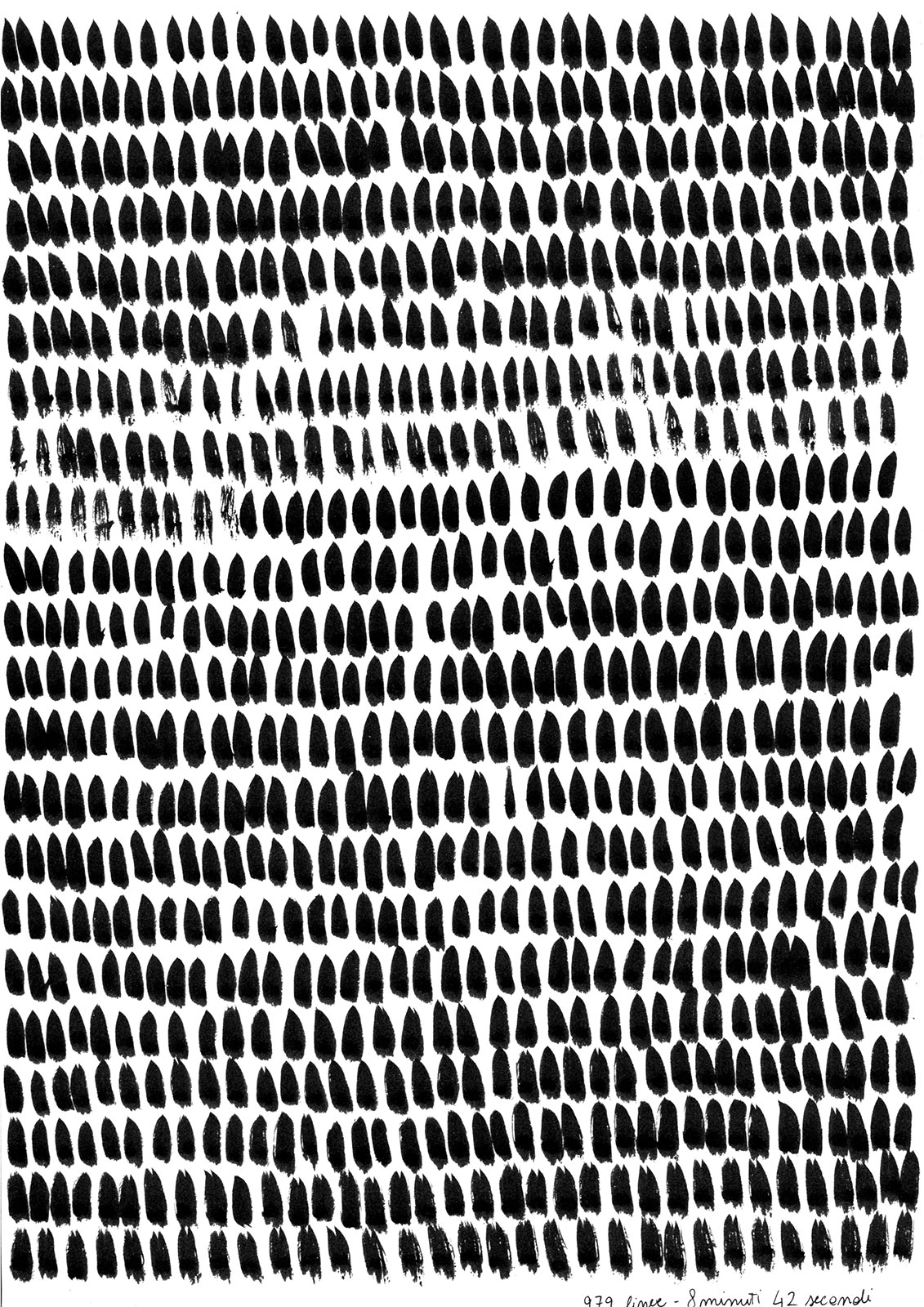


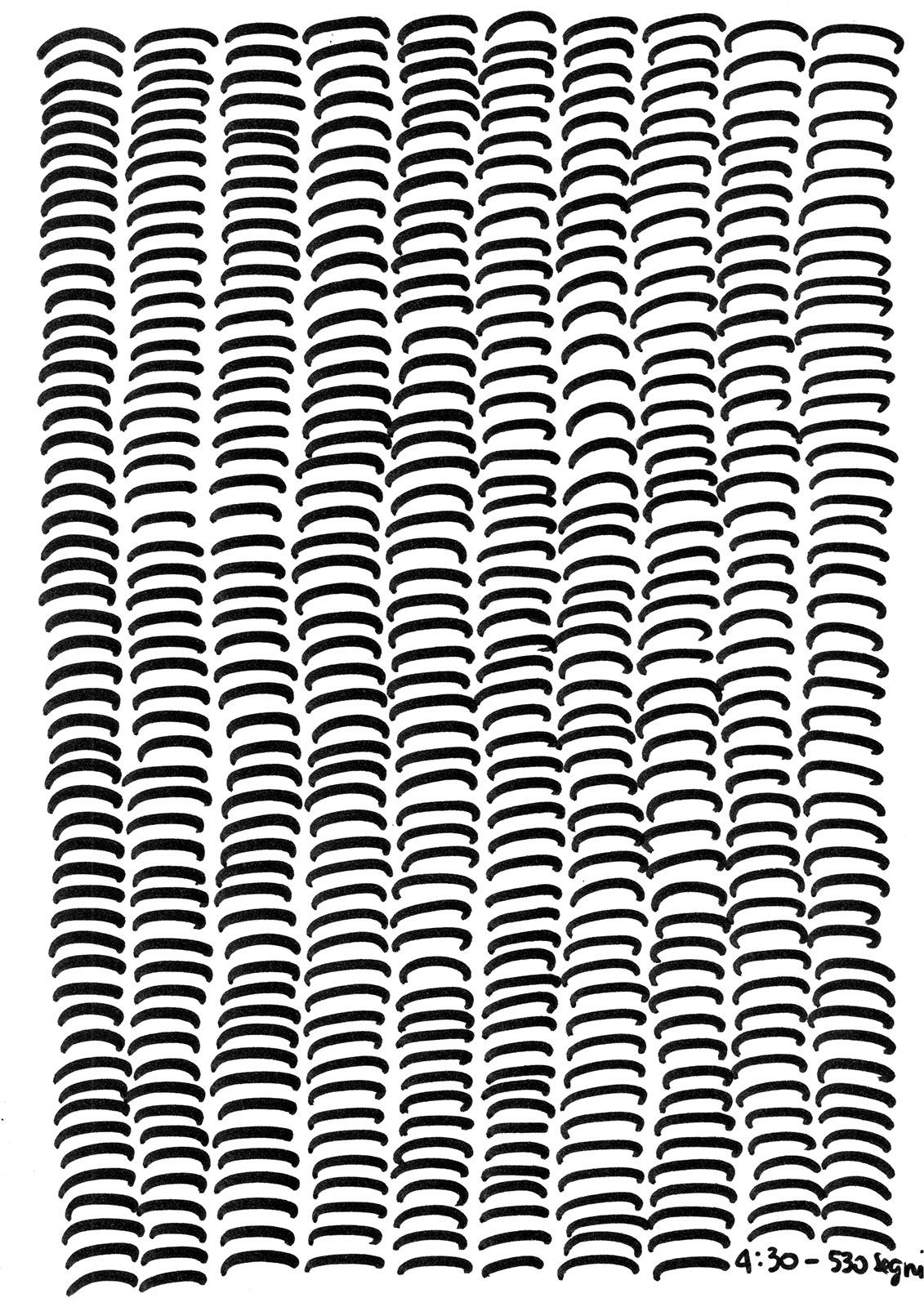
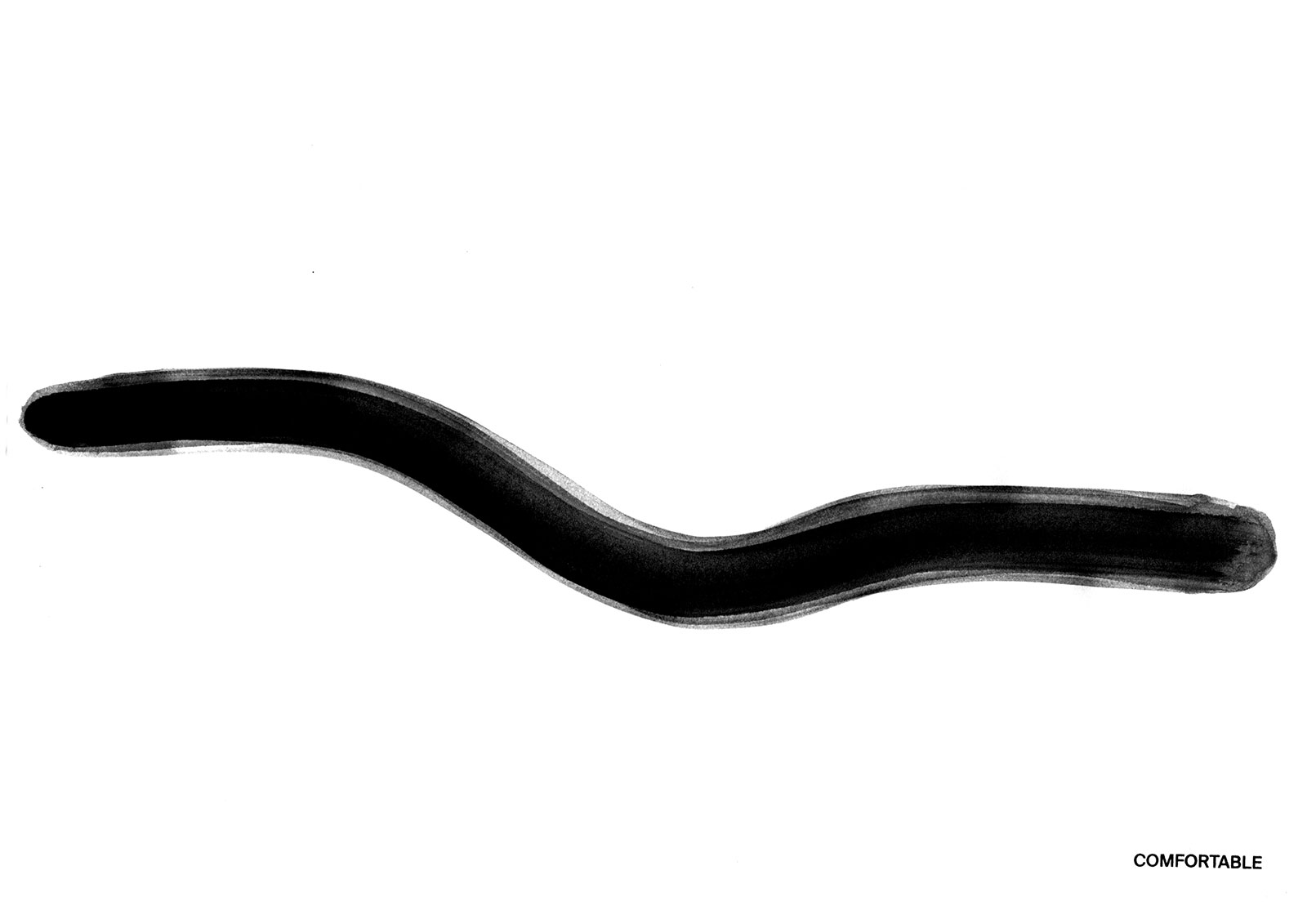



QUALITY
Pick an adjective from the dictionary describing a quality. Choose the most suitable tool to draw a single, abstract line expressing this quality.
Ask other people how they sense the drawn line. Does their perception match your intention?
Pick an adjective from the dictionary describing a quality. Choose the most suitable tool to draw a single, abstract line expressing this quality.
Ask other people how they sense the drawn line. Does their perception match your intention?

